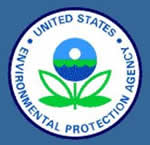The U.S. Environmental Protection Agency (USEPA) has announced its Per- and Polyfluoroalkyl Substances (PFAS) Action Plan in response to extensive public interest and input the Agency has received over the past year. PFAS are manmade chemicals used in a wide range of products because of their ability to repel water, grease, and oil.
The Action Plan identifies both short-term solutions for addressing the chemicals and long-term strategies that will help provide the tools and technologies States, Tribes, and local communities need to provide clean and safe drinking water to residents and to address PFAS at the source, before it gets into the water.
“The PFAS Action Plan is the most comprehensive cross-agency plan to address an emerging chemical of concern ever undertaken by EPA,” says Andrew Wheeler, USEPA Acting Administrator. “For the first time in Agency history, we utilized all of our program offices to construct an all-encompassing plan to help states and local communities address PFAS and protect our nation’s drinking water. We are moving forward with several important actions, including the maximum contaminant level process, that will help affected communities better monitor, detect, and address PFAS.”
The Action Plan describes long- and short-term actions that the USEPA is taking, including:
- Drinking water: USEPA is moving forward with the maximum contaminant level (MCL) process outlined in the Safe Drinking Water Act (SDWA) for PFOA and PFOS – two of the most well-known and prevalent PFAS chemicals. By the end of 2019, USEPA will propose a regulatory determination, which is the next step in the SDWA process for establishing an MCL.
- Clean up: USEPA has started the regulatory development process for listing PFOA and PFOS as hazardous substances and will issue interim groundwater cleanup recommendations for sites contaminated with PFOA and PFOS. This will provide additional tools to help States and communities address existing contamination and enhance the ability to hold responsible parties accountable.
- Enforcement: USEPA will use available enforcement tools to address PFAS exposure in the environment and assist States in enforcement activities.
- Monitoring: USEPA will propose to include PFAS in nationwide drinking water monitoring under the next Unregulated Contaminant Monitoring Program. The Agency will also consider PFAS chemicals for listing in the Toxics Release Inventory to help identify where these chemicals are being released.
- Research: USEPA will develop new analytical methods so that more PFAS chemicals can be detected in drinking water, soil, and groundwater. These efforts will improve the ability to monitor and assess potential risks. USEPA’s research efforts also include developing new technologies and treatment options to remove PFAS from drinking water at contaminated sites.
- Risk Communications: USEPA will work to develop a PFAS risk communication toolbox that includes materials that States, Tribes, and local partners can use to effectively communicate with the public.
To implement the Action Plan, USEPA says it will continue to work in close coordination with other federal agencies, States, Tribes, local governments, water utilities, industry, and the public. Additional information about PFAS can be found on the USEPA website.

